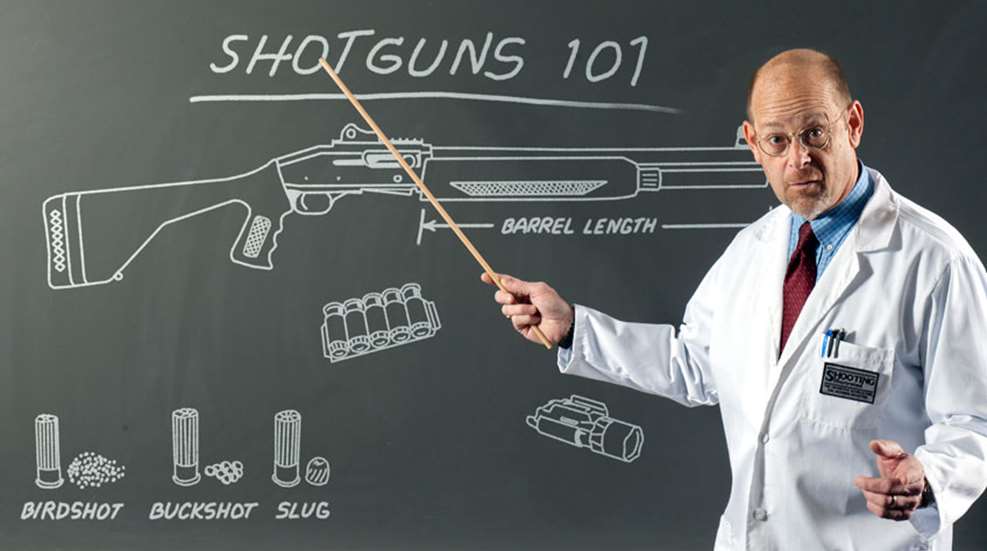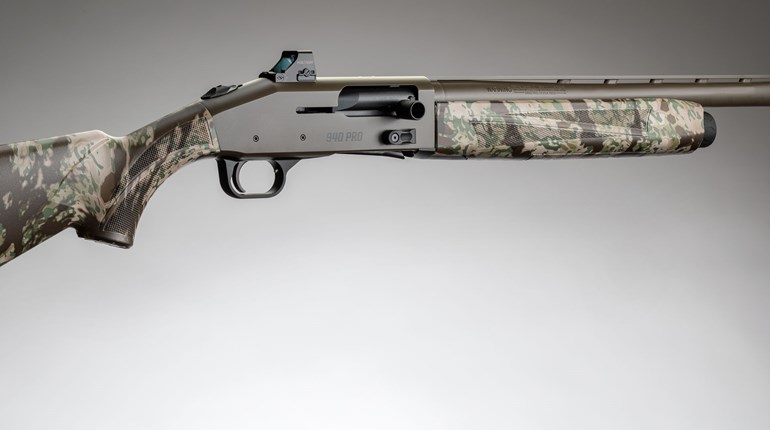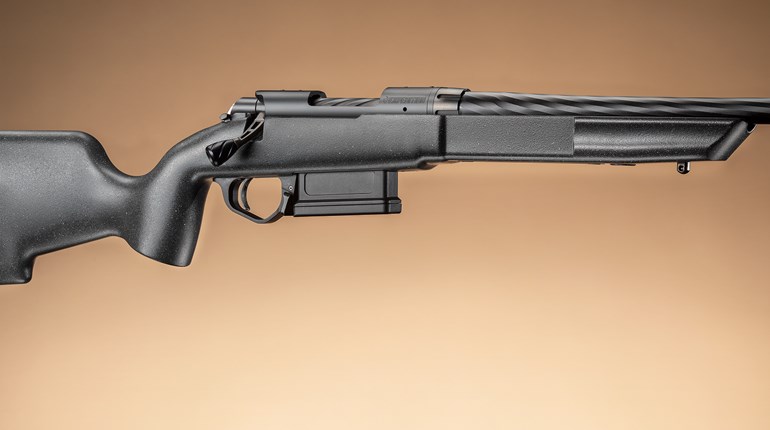
Even non-gun folks somehow know a shotgun is a great choice for defending the home. No doubt millions of Americans have Remington 1100s, 870s, Model 12s, Mossbergs and old doubles stashed in their closets—just in case they go duck hunting or have a break-in, whatever comes first. And the plan is sound … if keeping a shotgun handy was where the home-defense plan began and not ended.
Just racking the gun in hopes the robber and all his friends flee is no plan; nor is the bad strategy of ripping a few shots off of the porch as former Vice President Joe Biden once advised. So what should you do with that shotgun to up the odds so you and your family come out on the winning end of a home invasion? Well, first, you should listen to experts who do this stuff for a living.
Clint Smith, of Oregon’s Thunder Ranch training facility, is one of the most-respected firearm instructors in the world.
He says that merely finding a shotgun and a box of shells is not going to cut it. He stresses the importance of actually shooting and patterning your gun and load at 3, 5 and 7 yards—and farther—to get a feel for what your pattern will do. In one of his many online videos, he demonstrates by shooting a popper inches from a no-shoot target without hitting it, because he knows via experience that his buckshot’s pattern is only a few inches wide at 5 yards. This is the type of detail you need to know before you get in a gunfight in your home.
He also maintains that practicing and familiarizing yourself with any shotgun—even if it’s an old single-shot—is more important than having the latest tactical shotgun that you’ve seldom, if ever, fired. “Run the gun you’ve got,” preaches Smith.
Mike Lamb is a former Marine Force Recon warrior-turned-defensive-consultant who keeps a shotgun in his bedroom for his wife while he is away, or while he fetches his young boy in the event of a home invasion. He’s outspoken when it comes to the dos and don’ts of such matters, and says there’s a lot of “hillbilly information” out there. (His latest shotgun video is online here.) For example, he says banking on sound effects (the sound of a pump shotgun sliding into action) to end a fight is absurd. So, always go into the fight fully loaded. Secondly, he says don’t overthink your load.
“I’ve heard guys say they’re going to load rock salt first to scare them, then birdshot so it won’t penetrate the walls, then maybe some No. 4 buck followed by 00 buck and finally a slug in case they need a long-range finisher,” says Lamb, laced with sarcasm. “Don’t shoot to wound. Bad guys stop faster with 00 buck. And don’t use slugs for home defense, ever. They go through everything.”
He also reminds us that everyone in the home who is capable should be trained in the use of the shotgun. “Can everyone activate the light where it’s mounted? Is the stock too long for your wife?” Lamb says all of these questions need to be answered beforehand, and then a plan formulated.
Steve Fisher runs Sentinel Concepts, a private training company. When it comes to defensive shotguns, there’s not much that “Yeti” hasn’t considered.
“Consider and practice moving with the shotgun and transitioning from low- and high-ready positions based on where people are in the house,” says Fisher. He promotes a high-ready carry for most situations because it’s a better position from which to defend against gun grabs; he also uses it to easily splash light onto the walls from his shotgun-mounted light. It’s also superior when there are little ones underfoot. “There are times when you need to flow with the gun from high to low carry—if, for example, loved ones are upstairs,” says Fisher, “So you should know both, and know how to move and transition between them.”
Fisher, like Lamb, is a fan of 00 buck. Instead of using birdshot, he says you should use angles to reduce the chance of a pass-through hitting a friendly. “Be ready and able to drop to a knee to fire upward at an attacker,” says Fisher, “so the pellets will go high into the wall.” The same concept can be used with flanking angles. Like the other experts, he advocates practicing extensively so you know your shotgun’s pattern.
“Put extra shells on your gun via a sidesaddle (Fisher likes the tough-as-nails metal carrier made by Aridus Industries), and practice feeding the gun while on the move.”
Dave Hartman is Gunsite Academy’s training director. He agrees with Fisher that it’s imperative to be able to recharge the gun swiftly. “The shotgun’s limitation is its capacity,” he said, “so you’ve got to be able to keep it running.”
Yet Hartman, whose 870 is his primary home-defense gun due to its versatility, believes there is a time and place even for slugs.
“I’ve killed seven rattlesnakes this year,” he says, reminding us that “home defense” is a broad term that doesn’t always define a specific user’s needs. “I live in the boonies with no kids, and I often keep a slug handy for the occasional coyote.”
Hartman likes a short barrel, such as 18 or 20 inches for its maneuverability, something he’s learned that’s best via many runs through Gunsite’s shoot house. “Don’t crowd your cover,” he advises, as doing so can result in a barrel grab. When carrying in the low-ready position, he emphasizes to keep the support hand way up on the thigh to keep from pointing at your foot.
“Everyone needs to take a shotgun-specific training course from a reputable instructor,” says Hartman, and I believe everyone here can agree on that.




































